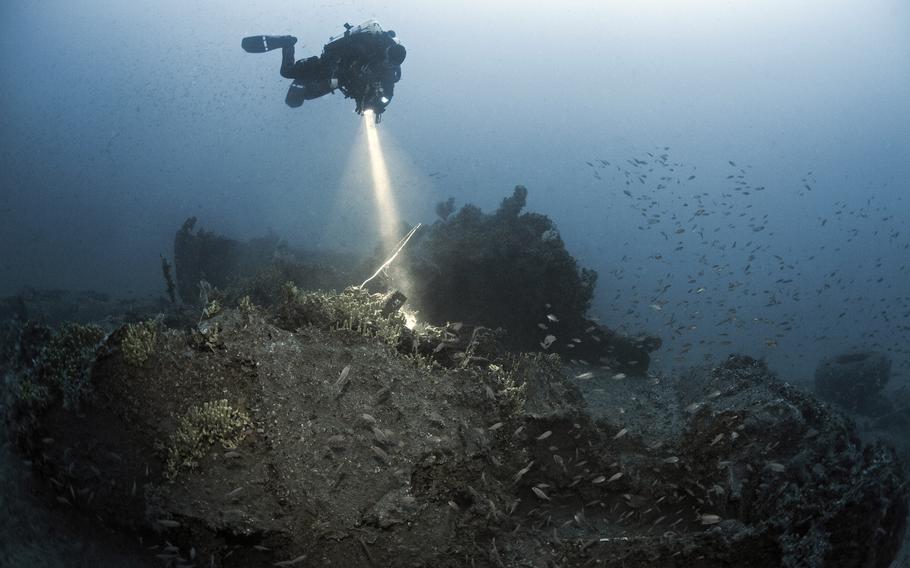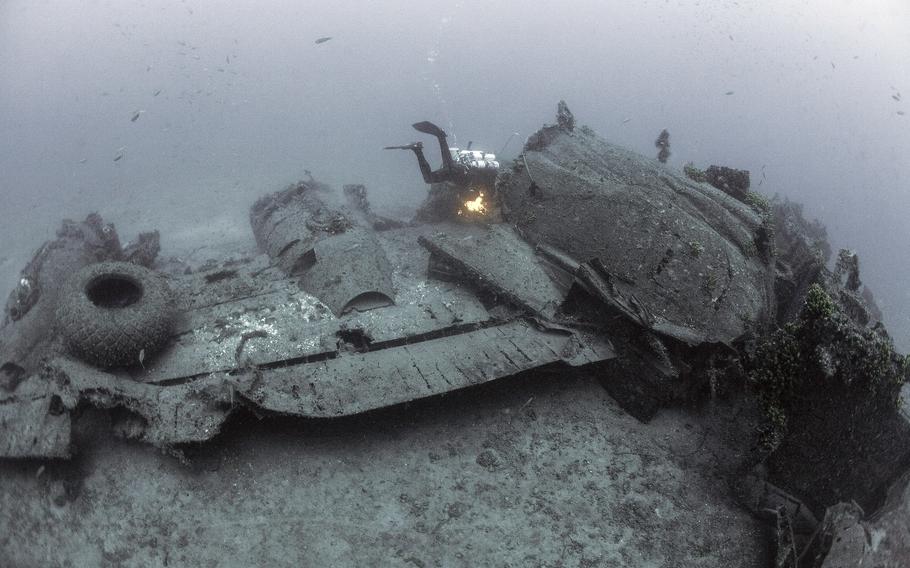Searchers find five World War II-era US bombers in waters off Croatia
Bombers #Bombers


A diver searches for clues to the identity of a World War II-era B-24 bomber lying in waters off the coast of Croatia during a two-week search mission in August 2022. (Project Recover)
Searchers have located the wrecks of five B-24 bombers that crashed into the Adriatic Sea during World War II, three of which are associated with 23 still-missing crew members.
The search mission – conducted over a two-week period in August off the coast of Croatia – was a partnership between Project Recover and the Defense POW/MIA Accounting Agency.
It was the culmination of a lengthy process of researching military records and obtaining needed permits from Croatia, Mark Moline, the mission leader and a cofounder of Project Recover, said in a phone interview Thursday.
Along with the B-17, the B-24 Liberator was a mainstay for U.S. strategic bombing in the European theater, with almost 19,000 of the heavy bombers built during World War II. It was utilized by all the American service branches in Europe and the Pacific.
The wrecks of an estimated 30 U.S. warplanes are believed to lie submerged in what was a frequent “ditching area” for crippled warplanes in the vicinity of the search area in the Adriatic Sea, which lies between Italy and the Balkans.
“Most of those aircraft took off from Italy and would bomb Europe,” Moline said. “Then, if they were attacked and limping and couldn’t make it back to Italy, they didn’t go directly back across the Adriatic.”
Instead, the pilots flew down the coast of what was then Yugoslavia – now Croatia – and ditched the aircraft in waters not controlled by the Nazis, Moline said. Some crews made it to safety; others did not.
Autonomous underwater vehicles scanned the sea floor in an area of about 24 square miles, Moline said.

A diver inspects the wing of a World War II-era B-24 bomber lying in waters off Croatia during a two-week search mission in August 2022. (Project Recover)

A diver prepares to descend into waters off Croatia Aug. 14, 2022, to film and document World War II aircraft wreckage on the seafloor. (Project Recover)

Project Recover cofounder Mark Moline rinses an underwater autonomous vehicle after its survey in waters off Croatia, Aug. 2, 2022. (Project Recover)
Project Recover was officially formed in 2016, but its roots and mission of locating and bringing home missing service members killed in action trace back to the early 1990s.
It works in partnership with the Scripps Institution of Oceanography, the University of California-San Diego and the University of Delaware.
The finding of five B-24s is the largest underwater aviation discovery Project Recovery has made to date.
Divers were able to positively identify three of the bombers, which are associated with 23 crew members who remain missing since World War II.
Moline declined to disclose any further information about the aircraft. Decisions about further missions to search for remains of crew members would be made by DPAA.
The wrecks were found in waters roughly 300 feet deep, which is near the safe maximum depth for divers, Moline said.
Searchers were surprised to find the aircraft with largely intact engine cowlings, propellers and wings.
DPAA sponsored the mission, which was part of the agency’s larger innovation effort to develop new technologies for locating the sites of submerged wrecks, Moline said.
This was the first mission in which Project Recover integrated a suite of instruments that included a side-scan sonar, magnetometer and a high-resolution video camera onto a single autonomous vehicle, Moline said.
The magnetometers locate ferrous material, and because they operated so close to the seafloor, the devices were able to detect even buried metals, he said.
The underwater drones, which are not tethered, cover a grid area in a “mow-the-lawn” pattern, he said.
A team at the University of Delaware is developing machine learning algorithms that can more quickly and accurately identify potential wrecks from the “firehose of data” collected by the high-resolution cameras, Moline said.
“It can be quite a long process going through all that material at the end of a long field day,” he said.
Such an algorithm could also be used to sift through vast amounts of images collected in past missions, perhaps recognizing a wreck that the human eye could not, Moline said.
Project Recover hopes to return to waters off Croatia for further searches.
“There’s quite a bit of local knowledge from fishermen, other divers, that kind of thing on potential new areas to look at,” he said. “There’s a lot more to be found.”